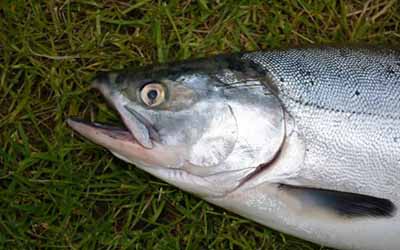We are delighted to announce the summary findings from a national surveillance programme, funded by the Scottish Government and delivered by a partnership of organisations last year, that will help us understand better the presence and distribution of invasive, non-native Pink salmon (Oncorhynchus gorbuscha) in rivers across Scotland. Pink salmon are native to the Pacific Ocean but are now appearing in Scotland’s rivers in increasing numbers. They represent a threat to the country’s unique aquatic biodiversity and freshwater fisheries.
The study uses an innovative approach of examining environmental DNA (eDNA), genetic material left behind by fish and collected in riverine water samples, to infer presence of Pink salmon in the studied rivers. In the laboratory, Pink salmon eDNA can be detected and distinguished from other fish species without the need to directly observe or capture fish, offering a powerful and non-damaging tool for biodiversity monitoring.
One phase of the monitoring programme was funded by the Scottish Governments’ Marine Fund Scotland while the other phase was resourced and delivered in parallel by the Scottish Environment Protection Agency (SEPA) and Marine Directorate of the Scottish Government (MD). The sampling was co-ordinated by partners of the Pink Salmon Task Group which comprises Fisheries Management Scotland, MD, NatureScot, SEPA and the Dee and Ness District Salmon Fishery Boards. The Task Group was established to monitor the extent of the Pink salmon invasion and prioritise and facilitate appropriate management actions. At a local level, these management measures can include targeted netting, trapping and electrofishing to remove Pink salmon before they spawn.

